Calligraphy today is rich, not only in Chinese characters but also in Vietnamese, English, Russian, German… as long as the “god” likes it, the “calligrapher” will indulge it. However, although the market mechanism changes the way people behave in wordplay, it cannot be denied that calligraphy wordplay is a way to guide people towards goodness.
 |
| Many young people ask for the word "PHUC" with the wish for a happy family. |
The "navel" of Vietnamese calligraphy is in the Temple of Literature ( Hanoi ), and from there it spreads and flourishes throughout the country. Wherever there are people asking for calligraphy, there are people giving calligraphy. In fact, asking for and giving calligraphy is to honor a "play" with culture. However, selling and buying calligraphy does not destroy the value, nor the beauty of pure Vietnamese culture that has been passed down for generations.
Many “calligraphers” choose to sell calligraphy as a way of making a living during the early spring. Writing and drawing follow the wishes of “God”, so in addition to Chinese characters, Vietnamese characters are also expressed in many other foreign characters. Just curving up and down, light strokes, bold strokes to create calligraphy paintings.
The "calligrapher" held the smartphone tightly in his hand, the "god" liked a word, the "calligrapher" turned on the phone, went to the translation section in Google, carefully typed in the word he was looking for, immediately the word... water appeared clearly on the screen. After just a frown, seemingly deciding where to start the stroke, on the red paper, the calligrapher was seen holding a brush pen, dipping it into the ink dish, lightly rubbing the edge of the dish a few times to reduce the heavy ink on the tip of the pen, and showing off his calligraphy talent.
The light strokes, the bold strokes, sometimes looking like dragons and phoenixes, sometimes like… a Bagua diagram. In the past, people played with words to express an elegant, polite spirit, deeply understanding the meaning of the words they played with and the word painting they asked for. Nowadays, playing with words is more practical. Most people buy words because of… crowd psychology, even “greedy and bored”. Children buy words as gifts for adults; boys and girls in love also give words to each other with the hope of fulfilling their wishes like the content of the words in the painting.
Nowadays, calligraphy is performed on many types of materials, such as ceramic vases, wood, bamboo, fabric, etc. However, in early spring, calligraphy is often performed on red paper. Although the market mechanism has a great influence on the mood of calligraphy sellers and buyers, it cannot be denied that among the people, there are still meticulous and dedicated artisans who often prepare paper and ink from the winter solstice, with the concept that the cold winter days are also the time when the warmth of spring is very close.
However, in the digital age, calligraphers can buy blanks (paper pre-printed with some Spring motifs), so when they meet a buyer, they can "paint" the letters according to the "order" and it's "OK". Very stylish, suitable for modern society where the buyer doesn't have to wait long.
To show that they are profound in literature, many "calligraphers" often flip through and re-open the red paper stacks while they are idle, mumbling as if reciting poetry: "Every year the peach blossoms bloom/I see the old calligrapher again/Displaying Chinese ink and red paper/On the crowded street."
In Thai Nguyen , there are no calligraphers sitting on the street, but are often seen in areas such as: Museum of Vietnamese Ethnic Cultures; Xuong Rong Temple; Phu Lien Pagoda; Hang Pagoda (Thai Nguyen City)... In the midst of crowded places, the "calligraphers" have a relaxed demeanor with a constant smile on their faces, creating a closeness and friendliness that many people admire.
Unfortunately, among those who play with words, there are many who follow the crowd mentality, seeing others playing with words, they also admire and buy them, but do not know how to play. Especially ancient Chinese calligraphy paintings, sometimes they hang them upside down in the house without knowing. There are also people who buy words for luck every year in the spring, so they often intend to buy words. There are also people who go to festivals and see something interesting, stop by the ink stall, carefully greet politely, and ask the calligrapher to explain it. When they understand the meaning of the word, they ask the calligrapher to write the word they need. Then, they interpret the word to identify the person, for example, the person who plays with the words “TALENT”, “LOC”, “PHU QUY”… must be a businessman or a trader. Young people who buy the word “TRUONG SINH” will probably bring it home as a gift for their elderly parents. Those who buy the words “NHAN, NGHIA, TRI, DUNG” are usually martial artists. Women who buy the word "PEACE" must have husbands who are holding some position in a government agency...
Asking for calligraphy at the beginning of the year is not only a pleasure for those who aspire to “truth, goodness, and beauty”, but also shows the love of learning, respect for teachers, and respect for morality of the person asking for calligraphy. This is also a beautiful traditional cultural feature of the nation, expressing people’s desire for goodness, and the hope for a new year with good things. Therefore, buying calligraphy for fun, no matter what kind of calligraphy, is very precious.
Source


![[Photo] Close-up of Tang Long Bridge, Thu Duc City after repairing rutting](https://vphoto.vietnam.vn/thumb/1200x675/vietnam/resource/IMAGE/2025/5/19/086736d9d11f43198f5bd8d78df9bd41)
![[Photo] Panorama of the Opening Ceremony of the 43rd Nhan Dan Newspaper National Table Tennis Championship](https://vphoto.vietnam.vn/thumb/1200x675/vietnam/resource/IMAGE/2025/5/19/5e22950340b941309280448198bcf1d9)

![[Photo] General Secretary To Lam attends the conference to review 10 years of implementing Directive No. 05 of the Politburo and evaluate the results of implementing Regulation No. 09 of the Central Public Security Party Committee.](https://vphoto.vietnam.vn/thumb/1200x675/vietnam/resource/IMAGE/2025/5/19/2f44458c655a4403acd7929dbbfa5039)
![[Photo] President Luong Cuong presents the 40-year Party membership badge to Chief of the Office of the President Le Khanh Hai](https://vphoto.vietnam.vn/thumb/1200x675/vietnam/resource/IMAGE/2025/5/19/a22bc55dd7bf4a2ab7e3958d32282c15)







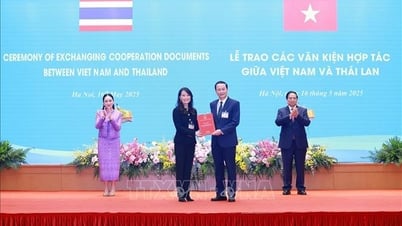















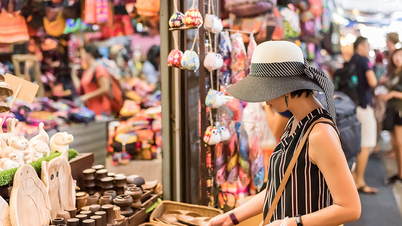
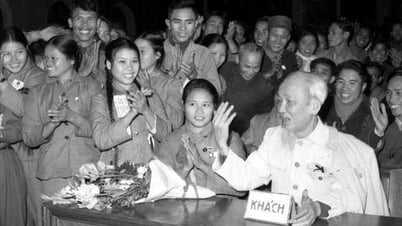


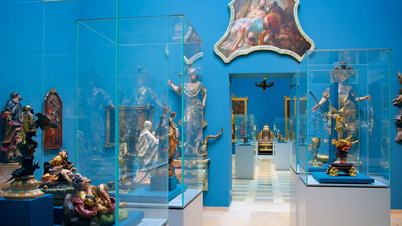
















































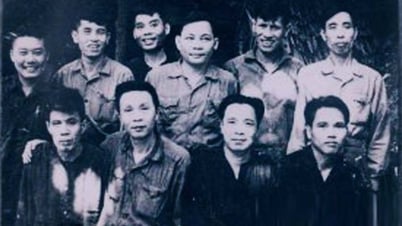









![[VIDEO] - Enhancing the value of Quang Nam OCOP products through trade connections](https://vphoto.vietnam.vn/thumb/402x226/vietnam/resource/IMAGE/2025/5/17/5be5b5fff1f14914986fad159097a677)



Comment (0)